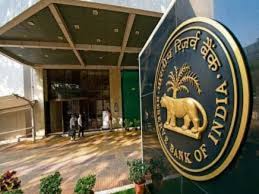RBI Bulletin article: Indian economy remains largely resilient despite global uncertainties, high tariff risk

Amid growing global economic instability and rising protectionism, India has managed to maintain steady economic momentum, according to the Reserve Bank of India’s (RBI) latest monthly bulletin. While international markets struggle with inflation, geopolitical tensions, and surging tariffs, India’s domestic indicators reveal a relatively stable and resilient economic landscape.
Domestic Activity Drives Economic Momentum
One of the standout observations from the RBI’s July 2025 bulletin is the strength of India’s internal demand. Urban consumption indicators, including passenger vehicle sales, electricity consumption, and GST collections, point to a steady rebound in activity. Meanwhile, rural demand — often seen as the backbone of India’s broader economy — has remained robust thanks to timely monsoons and positive expectations for the kharif crop season.
The services sector, particularly in transportation, hospitality, and financial services, continues to grow at a healthy pace. High-frequency data also suggests improved footfall in malls, higher fuel consumption, and increased travel bookings — all signs of growing consumer confidence.
Government Spending Provides a Boost
A key pillar of this resilience is the central government’s aggressive capital expenditure strategy. According to RBI data, the government has already utilized nearly 20% of its annual infrastructure budget in just the first two months (April–May) of FY2025–26. This frontloading of investment has given a significant push to sectors such as construction, logistics, and materials.
The multiplier effect of this public investment is visible across the economy. Increased activity in railways, highways, and rural development projects is generating employment and boosting consumption in second- and third-tier cities.
Inflation Under Control, Policy Support Strong
One of the most encouraging signals is the cooling of consumer inflation. The Consumer Price Index (CPI)-based inflation dropped to 2.1% in June 2025, its lowest level since January 2019. For the fifth straight month, retail inflation has remained below the RBI’s 4% target range, giving policymakers the breathing room to support growth.
Taking advantage of this trend, the RBI recently reduced the repo rate by 50 basis points, bringing it down to 5.5%. In addition, the central bank cut the Cash Reserve Ratio (CRR) by 100 basis points, injecting more liquidity into the banking system. These steps are aimed at improving credit flow to key sectors like MSMEs, agriculture, and housing.
External Sector: Strong But Cautious Outlook
India’s external position has also shown remarkable stability. The country’s foreign exchange reserves have surged past $700 billion, covering 95% of its external debt and providing over 11 months of import cover. This buffer acts as a crucial safeguard against any sudden volatility in global capital markets or currency fluctuations.
Exports have seen some moderation due to sluggish demand in advanced economies, but India’s diversified export basket — including pharmaceuticals, software, and engineering goods — has helped cushion the blow. Remittances remain strong, particularly from the Middle East and Southeast Asia, which further supports the balance of payments.
Rising Global Tariffs: A Looming Threat
Despite the positive domestic outlook, the RBI has flagged growing risks from the international arena. One of the most pressing concerns is the resurgence of protectionist policies across the world. With several major economies increasing import duties and pushing for self-reliance, global average tariff levels are approaching those seen during the 1930s Great Depression era.
Such shifts pose a serious challenge for India’s exporters, particularly in sectors like textiles, automotive components, and electronics. The RBI bulletin warns that if global trade barriers continue to rise, they could disrupt supply chains and reduce demand for Indian goods abroad.
Strategic Reforms Needed to Mitigate Risks
To combat these evolving risks, the RBI has emphasized the importance of structural reforms. India needs to diversify its export markets and forge stronger trade partnerships, especially with countries in Southeast Asia, Africa, and Latin America. Regional trade agreements, enhanced logistics infrastructure, and a more business-friendly regulatory environment can improve competitiveness.
Investments in sectors like semiconductors, renewable energy, and digital services are also key to insulating the economy from external shocks. Encouraging innovation, boosting R&D, and streamlining ease of doing business can help Indian firms scale up globally.
Employment and Labor Market Trends
The Indian labor market has shown signs of resilience as well. According to the bulletin, the unemployment rate remained stable at 5.6%, with increased job creation in construction, services, and manufacturing. The rural employment guarantee scheme (MGNREGA) has also played a role in supporting low-income households during lean agricultural periods.
Skill development programs and apprenticeship models are gaining traction, and the formalization of the workforce is improving gradually, aided by platforms like EPFO and e-Shram.
Conclusion: A Cautious Optimism
The RBI’s assessment paints a picture of an economy that is resilient but not immune. India’s fundamentals remain strong — with a young workforce, expanding middle class, and strategic public investment — but the country must stay vigilant in a world that is becoming increasingly unpredictable.
While domestic demand, inflation control, and monetary easing provide short-term relief, long-term stability will depend on how India navigates the changing global trade landscape. Resilience in this new world order will come not just from weathering the storm but from anticipating and adapting to it.






